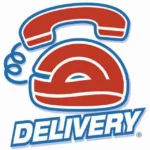It hasn’t been a great month for Lenovo which has been doing very well otherwise. Currently they are the worldwide market leader in PCs, have the most powerful corporate PC brand, just picked up IBM’s x86 server business, and with Motorola they have become one of the world wide powers in cell phones. Oh, and their Yoga Tablet 2 rivals Microsoft’s Surface as the strongest alternative to the iPad. But Lenovo also put a questionable software product called “Superfish” on their consumer laptops and not only are they now doing image damage control, they have a class action suite they have to contend with though most of the lawsuits historically on this class of software have failed.
Let’s talk about how this situation degraded so badly.
Crapware
Crapware was a name placed on free software that is often preinstalled with onto PCs that the OEMs got paid for. By using Crapware, the OEMs could either sell PCs for lower prices or sell at the same price and get higher margins which seemed like an excellent idea. Only problem is that users hate this class of software which often got in their way and annoyed them in multiple ways. HP and especially Sony were famous for loading their machines up with this, well crap.
This was one of those decisions that made it look like the executives of those firms were incompetent because the company with the strongest margins and greatest customer loyalty was Apple and Apple won’t touch Crapware with someone else’s ten foot pole. Why? Because, to them, user experience was king. I often theorized that Apple would likely be happy to pay $5 for each Windows PC sold if they were allowed to go in and destroy the user experience on that machine. And I’ve wondered how many Windows PC OEMs would have foolishly taken the money.
Over time, largely because of user complaints and obvious pressure on market share, the OEMs loaded less and less Crapware and generally what they did load was opt-in. I’d often wondered, though, why there weren’t a rash of class action lawsuits in those early years given those early products were on by default and did some pretty painful things.
Superfish
Superfish is one of the more benign programs that was developed to emulate how Google makes money by capturing user information that can be sold to advertisers and directing people to web sites they likely wouldn’t otherwise discover. Like a lot of redirect programs, it introduces risk by creating the potential to fool users into thinking that they are going to the site they intend while instead directing them to another which might be infected by malware. This is called a man-in-the-middle attack and was the most egregious part of Superfish. At the outset, Lenovo agreed it was far too risky so they disabled this feature in their implementation. [CK1]
Lenovo’s mistake was to accept a piece of software that had this vulnerability in the first place because, if the problem were discovered (which is what happened) the decision to place this software on their machines would be questioned. Because of the sorry history of crapware, Lenovo would be guilty until proven innocent and tried in the media. Trying to position Superfish as a benefit of the user would be disbelieved, given the history of Crapware and particularly given users hated Superfish bringing Lenovo’s whole Quality Assurance process into question.
For decades OEMs have largely left much of the user experience testing up to Microsoft and this event showcases why that wasn’t a good idea particularly when introducing something outside of Microsoft’s testing.
But it is often darkest before the dawn.
Wrapping Up: Lenovo Benefit
This was a hard lesson for Lenovo but there is potentially a silver lining. The company has announced that they are forming up an effort to treat their consumer user experience like they do their ThinkPad user experience. They are taking a lot of the responsibility for that experience themselves and this should result in a far more Apple-like customer satisfaction.
The market tends to love reformed sinners because they believe that a company will do like they would and work to avoid experiencing the same problem twice. It won’t happen overnight but if Lenovo delivers on their promise to create the best user experience and avoid all future Crapware, customers should flock to them eventually as they flock to Apple because, in the end, they all want a better experience.
So the lesson here is to focus on user experience in the first place as paramount. But if you screw up, don’t cover it up; apologize and make good on a promise to excel in this area going forward. Not only are you more likely to survive you are more likely to become the next Apple. We should see this scenario play out over the next 2 to 3 years at Lenovo.
[CK1]Couple of things—one of the biggest complaints about Superfish is that it also tracks users’ behavior on secure (HTTPS) sites and redirects them to unsecure sites. Other thing I’ve heard is that it endangers systems by using a common security key across all laptops, so if someone ferrets out the key, they could take control of and steal data from an infected laptop.








